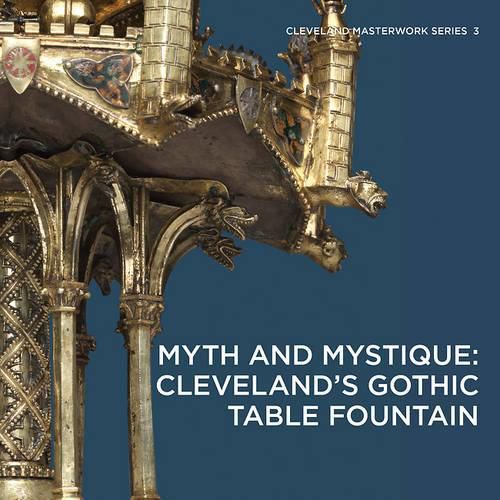Readings Newsletter
Become a Readings Member to make your shopping experience even easier.
Sign in or sign up for free!
You’re not far away from qualifying for FREE standard shipping within Australia
You’ve qualified for FREE standard shipping within Australia
The cart is loading…






The Cleveland table fountain, dated c. 1320 40, is the only version of its kind to have survived in its complete form from the Middle Ages. A superb example of French Gothic goldsmithing, it is an exquisite structure and a unique example of courtly taste and princely fashion. In its full working glory, it was designed not for any religious purpose, but purely as an indulgence; the delicate bells would have created a gentle tinkling sound as the perfumed water trickled down into the basin beneath.
Acquired by the Cleveland Museum of Art in 1924, the uncertain history of the fountain has added to its charm, and many questions remain worthy of re-examination. Stephen N. Fliegel assesses the fountain in the context of similar luxury objects, discussing its history, use, materials and style. Elina Gertsman elucidates the significance of fountains in the medieval imagination. Once one of many, the Cleveland table fountain is the last of its kind; a fantastic piece of craftsmanship designed to appeal to all the senses.
AUTHOR: Stephen N. Fliegel is curator of medieval art at the Cleveland Museum of Art. Elina Gertsman is associate professor, Department of Art History and Art, Case Western Reserve University.
SELLING POINTS: . Focuses on one of the most remarkable examples of gothic art to have survived, a unique functioning table decoration. . Will appeal to academics, students, and museum professionals interested in medieval decorative arts, especially goldsmith works and enamels, and automata
$9.00 standard shipping within Australia
FREE standard shipping within Australia for orders over $100.00
Express & International shipping calculated at checkout
The Cleveland table fountain, dated c. 1320 40, is the only version of its kind to have survived in its complete form from the Middle Ages. A superb example of French Gothic goldsmithing, it is an exquisite structure and a unique example of courtly taste and princely fashion. In its full working glory, it was designed not for any religious purpose, but purely as an indulgence; the delicate bells would have created a gentle tinkling sound as the perfumed water trickled down into the basin beneath.
Acquired by the Cleveland Museum of Art in 1924, the uncertain history of the fountain has added to its charm, and many questions remain worthy of re-examination. Stephen N. Fliegel assesses the fountain in the context of similar luxury objects, discussing its history, use, materials and style. Elina Gertsman elucidates the significance of fountains in the medieval imagination. Once one of many, the Cleveland table fountain is the last of its kind; a fantastic piece of craftsmanship designed to appeal to all the senses.
AUTHOR: Stephen N. Fliegel is curator of medieval art at the Cleveland Museum of Art. Elina Gertsman is associate professor, Department of Art History and Art, Case Western Reserve University.
SELLING POINTS: . Focuses on one of the most remarkable examples of gothic art to have survived, a unique functioning table decoration. . Will appeal to academics, students, and museum professionals interested in medieval decorative arts, especially goldsmith works and enamels, and automata